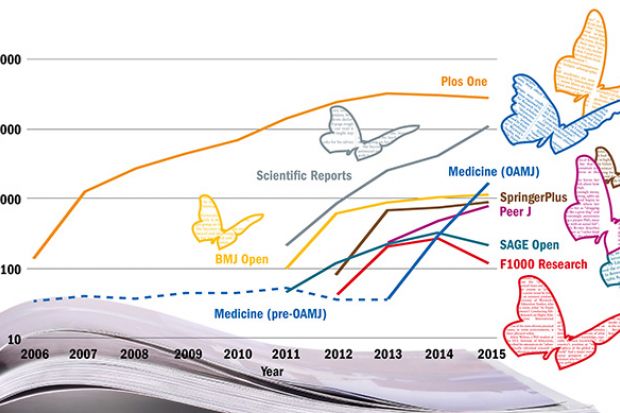View and/or download a high-resolution version
Two journals dominate: Plos One, which published nearly 27,500 papers in 2015, and Scientific Reports, a sister publication of Nature, which published 10,600.
But Plos One publications are down 9 per cent on last year, and a monthly analysis found that Scientific Reports overtook it in September this year.
Advocates argue that accepting articles simply because they are scientifically sound cuts rejection rates and saves time; but mega-journals, which charge to publish articles, have also been accused of being “cash cows” to subsidise publishers’ other, more selective journals.
Mega-journals make up only a tiny fraction of academic publishing; in 2015, they accounted for 2.5 per cent of all articles, found “Open-access mega-journals: a bibliometric profile”, itself published in Plos One.
When it came to citations, mega-journals varied widely. Articles in Scientific Reports gained an average of 12.4 citations, the highest of the group. Sixty per cent of mega-journals analysed had a higher average citation rate than journals in general.
However, average citations have been widely criticised as a measure of journal quality, not least because of the variation between papers. Many fewer articles in Scientific Reports garnered no citations than in the theoretically more prestigious Nature, where more than 30 per cent attracted none.
